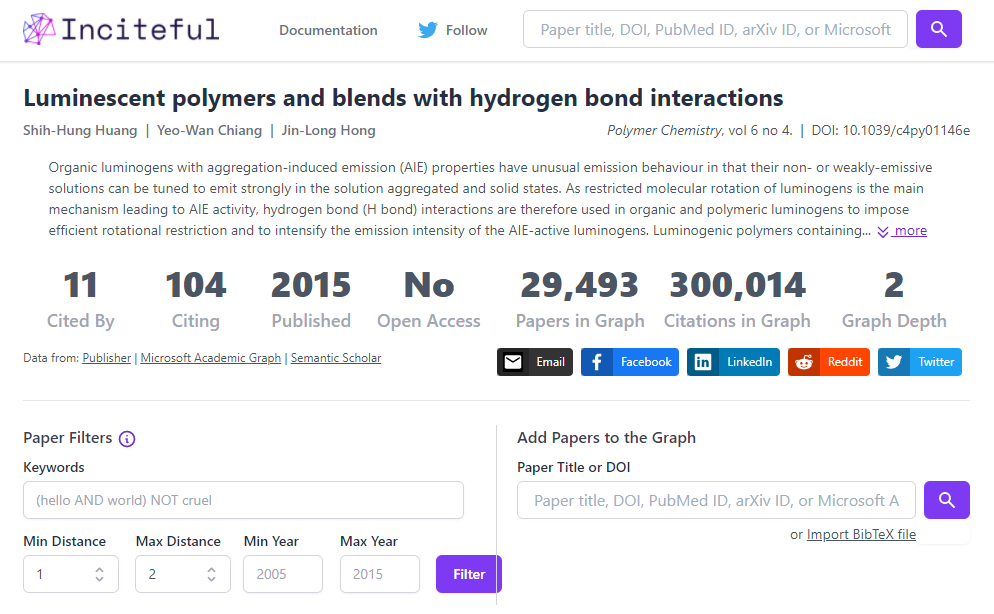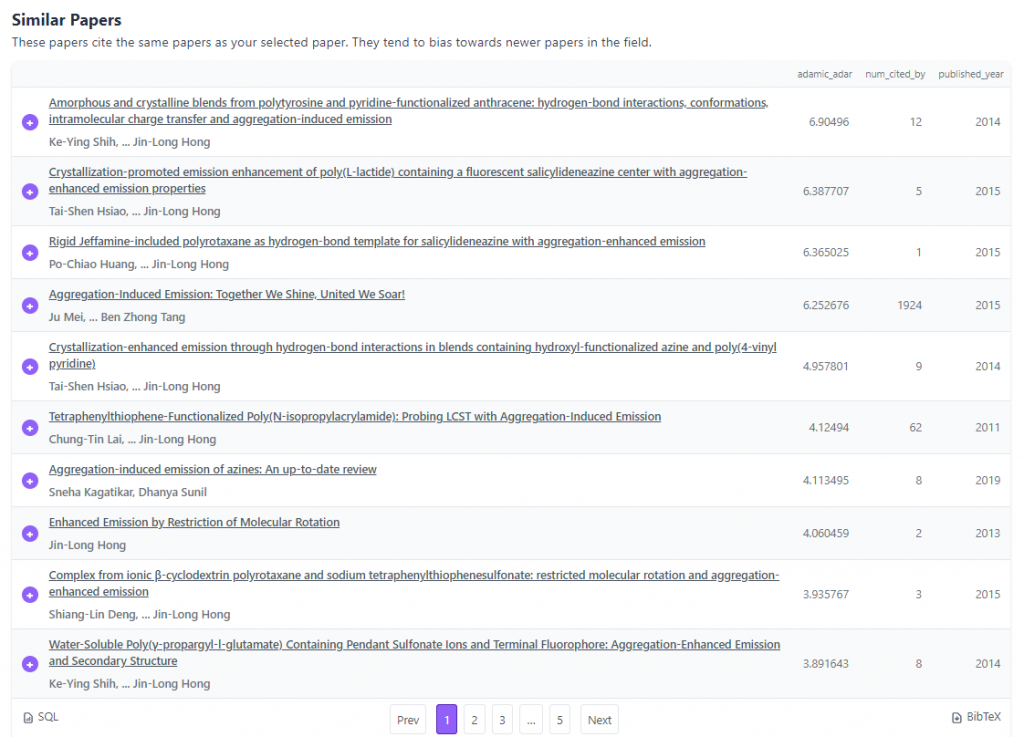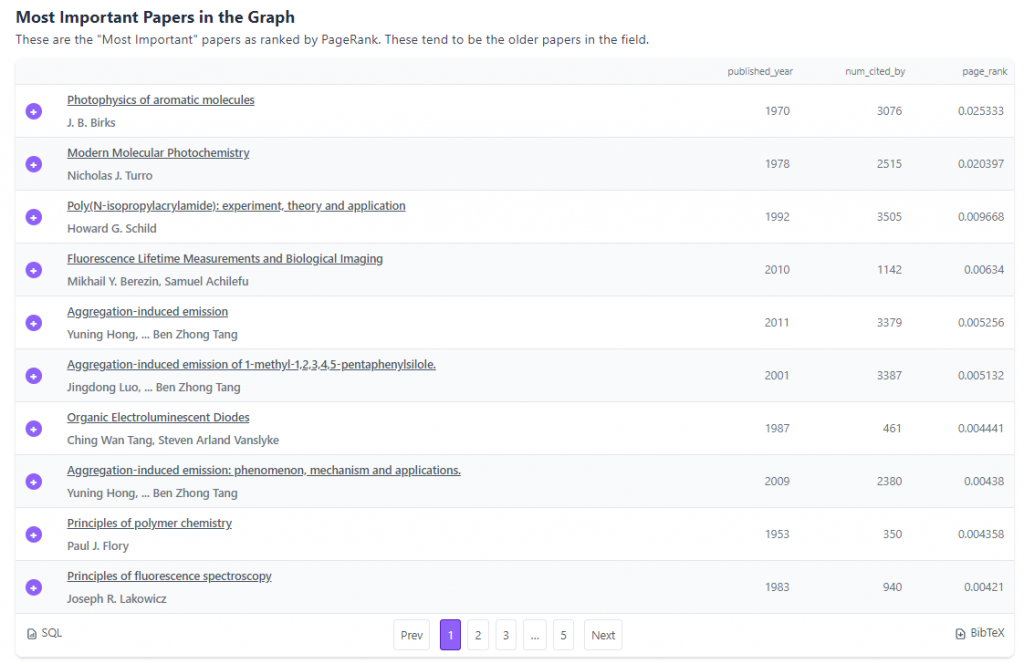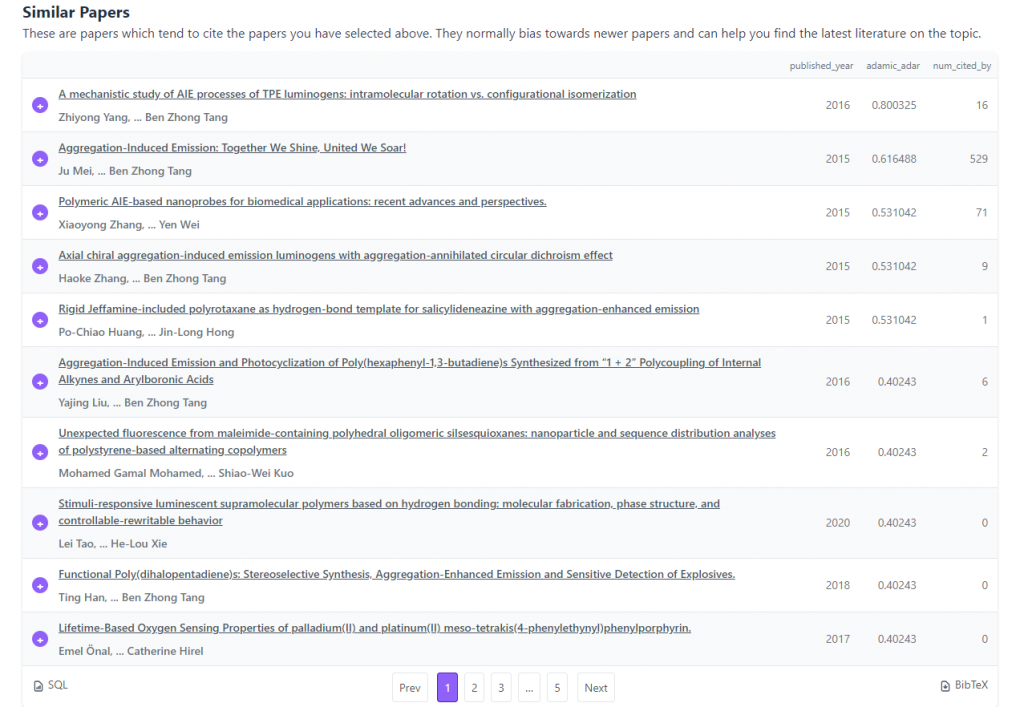Unlike traditional citation databases which would yield results by keyword or topic search, Inciteful creates a graph of academic papers based on “seed papers” of your choice and helps you gain insight from it.
Ways to Use Inciteful
Inciteful is a free online tool that helps you map academic literature. It can be used in a variety of ways depending on what you are trying to accomplish. Start from seed paper(s), you can have an overview on the current state of that topic. Then, by adding more seed papers or filters, you can further craft the citation graph and have a focus on your search. If you are writing a paper, you can import the items in your reference list to Inciteful, and the resulting graph should be centered around the paper you are writing. Particularly, the similar papers section may reveal some papers that you may have missed for inclusion via traditional keywords or citation searches.
Start with a Paper
Essentially, when a paper is selected as “seed paper” in Inciteful, it will create a depth 2 graph, with the paper as node labelled 0, papers citing or cited the node 0 paper as nodes labelled 1, and secondary search for citing or cited papers of node 1 papers as nodes labelled 2. Take the following paper as an example, in total, this graph has 29,493 papers (nodes), and 300,014 citations (links). Inciteful then use algorithms to generate the most relevant papers in this graph with this underlying structure.

Figure 1. Start with one paper as seed paper in Inciteful
Similar Papers
Similar papers generated from the graph are papers that cite the same papers as your selected paper. The developer chose to use Adamic/Adar algorithm because it does not overly penalize a mutual paper for being popular but it still rewards papers which mutually cite less cited papers.

Figure 2. Similar papers of the seed paper in the citation graph
Important Papers
The “Important Papers” table is literally the place listing important or fundamental papers of a topic. PageRank is used as the ranking algorithm. Given the nature of academic works, PageRank algorithm tends to bias towards older highly cited papers. Nonetheless, it does give weight to papers which may not have a ton of citations but that are cited by papers which do. This is in contrast with major citation databases such as Web of Science or Scopus, whose result lists, if sorted by “times cited”, are only based on the number of the citations each item gained of all times.

Figure 3. Most important papers in the citation graph
Customize Your Own Citation Graph
If there is only one seed paper, the citation graph will have a depth of two by default. The slick thing about inciteful is that if there are multiple seed papers, then node labelled 0 becomes a fake, non-exist paper that cites those seeds papers (node 1), and node 2 are all papers which are cited by or cite the seed papers. Because of this fake node 0, you can craft a graph specific to the topic of your interest and therefore understand the underlying structure of the graphs which is created just for you.
Adding seed papers and/or applying filters is an iterative process for achieving a graph with better precision. I find this process delightful and inspirational as I see the lists becoming more and more relevant every time I refine my selection of seed papers.

Figure 4. Five papers selected as seed papers in the graph

Figure 5. The new similar papers list after adding more seed papers
Finally, the other data section shows who are publishing the papers, their affiliations, as well as the publication venues. This is useful for us to see who the field experts are, and potential journals where we can submit the manuscript to.
Things to Note
The developer of Inciteful curates a very detailed documentation showing us how Inciteful works, together with quite a few practical instructions. I found the following things worth highlighting:
- Inciteful will stop the first search if a depth-2 graph has over 150,000 papers. It is recommended that you apply keyword filters or add more seed papers to make the graph more tailored to your topic.
- The keyword filter does do Boolean queries, however, it only filters on keywords present in the paper title. Some keyword stemming algorithms will be applied to the keywords automatically.
- As a free tool itself, Inciteful is built upon free open metadata and citations. It draws data from Microsoft Academic Graph, Semantic Scholar, Unpaywall, Crossref, and Open Citations.
- It supports both BibTex importing as well as exporting.
Similar Tools
Besides Inciteful introduced in this blogpost, previously we have shared tech tips on using similar products such as Connected Papers, Scite, VOSviewer and Semantic Scholar. They all have their own unique features and have different complexities in terms of indexing & ranking algorithms. Try them out!
– By Jennifer Gu, Library
Views: 7268
Go Back to page Top
- Category:
- Research Tools
Tags: citation graph, inciteful, ranking algorithms
published May 5, 2021


